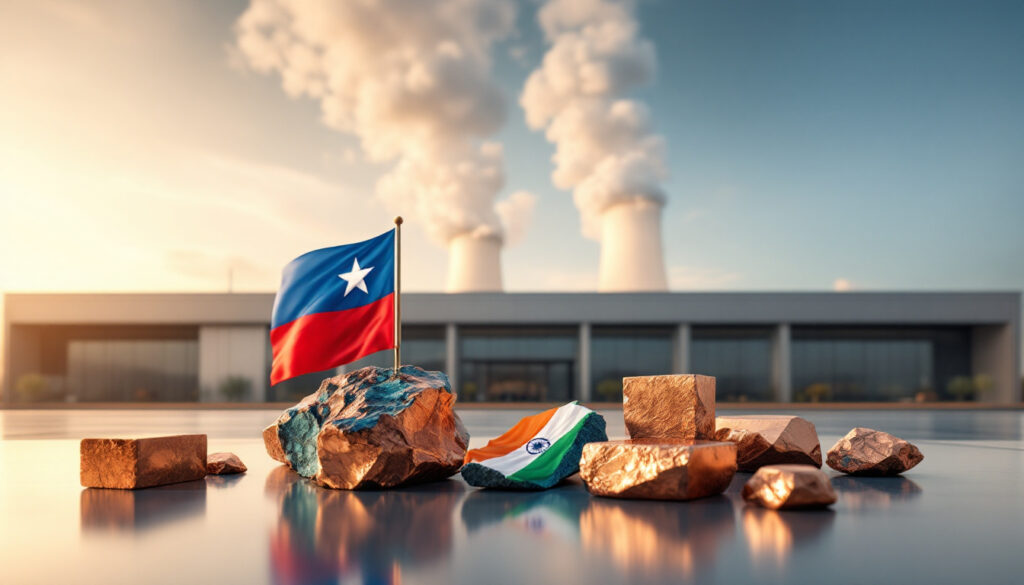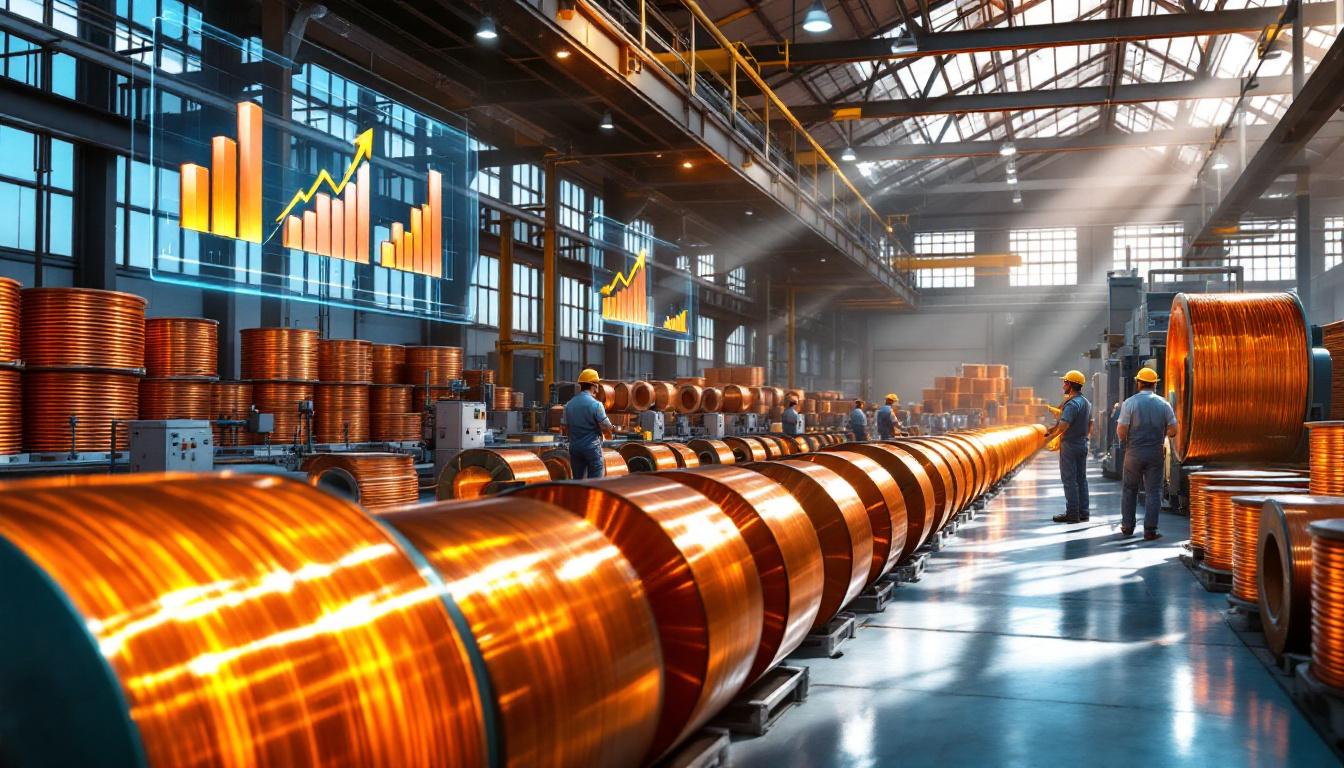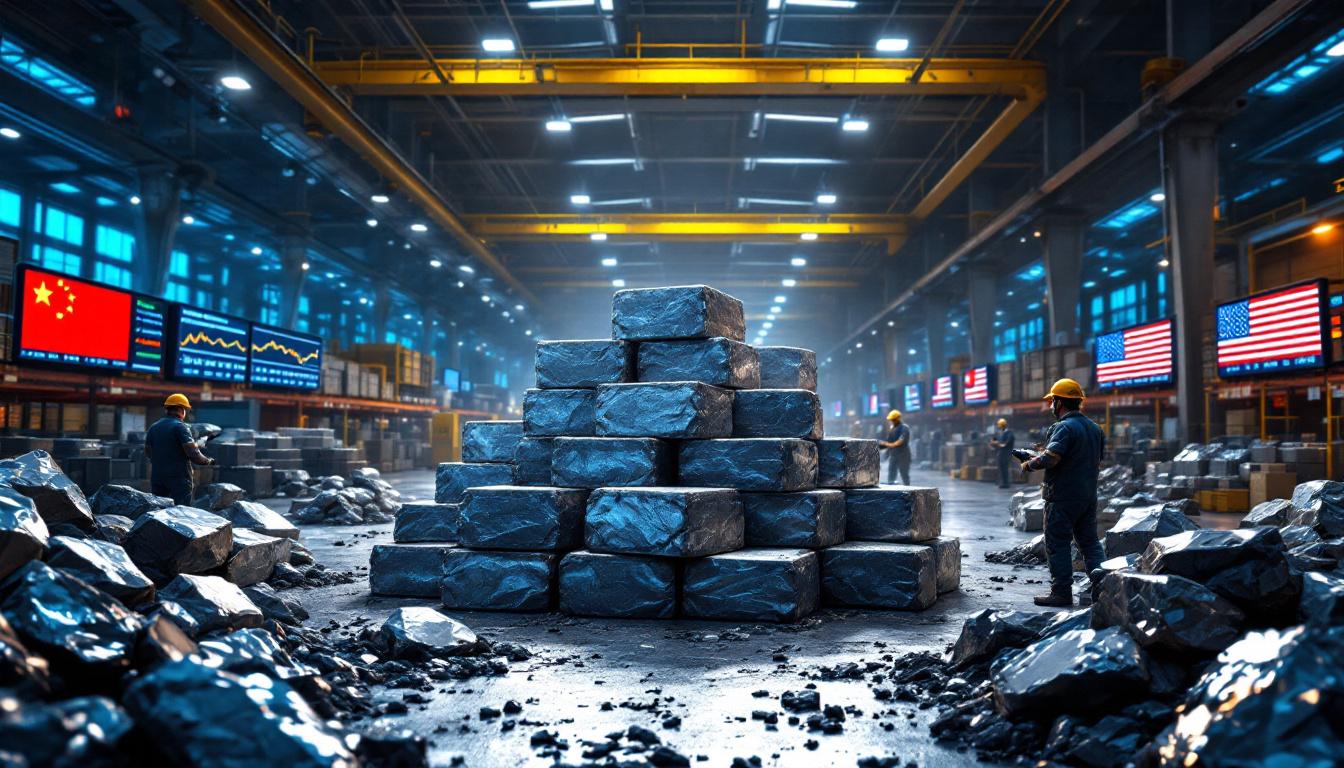What is the Codelco-Adani Copper Agreement?
The agreement establishes a long-term supply relationship between Codelco, the world's largest copper producer, and Adani's Kutch smelter, addressing global concentrate shortages while fostering Chile-India economic ties.
Codelco will deliver 200,000 metric tons of copper concentrate annually beginning in 2025, with provisions for volume adjustments based on market conditions. The contract includes price escalation clauses tied to LME copper prices, ensuring mutual flexibility.
The deal was formalized during a meeting between Codelco Chairperson Máximo Pacheco and Gautam Adani, emphasizing collaborative governance frameworks for quality control and delivery timelines.
Key Details of the Supply Agreement
Codelco will begin supplying copper concentrates to Adani in 2025, marking a significant milestone in the global copper market's evolution.
The agreement supports Codelco's strategy to diversify its customer portfolio beyond traditional markets like China, which currently accounts for 40% of its exports.
The partnership was officially signed on April 2, 2025, during Chilean President Gabriel Boric's state visit to India, highlighting its diplomatic significance.
Strategic Importance for Both Parties
For Codelco, this agreement opens access to India's rapidly growing copper market, projected to expand at 8-10% annually through 2030.
For Adani, it secures a reliable supply source amid unprecedented global concentrate shortages, allowing the Kutch smelter to increase utilization from 60% to 85%.
The partnership aligns with India's National Mineral Policy 2023, which targets self-sufficiency in copper production by 2030, reducing import dependency from 60% to 40%.
Why is India Important to the Global Copper Market?
India represents one of the fastest-growing markets for copper consumption globally, making it a strategic priority for major producers like Codelco.
The country's copper demand is projected to reach 1.5 million metric tons by 2030, driven by massive infrastructure development and the renewable energy transition.
India's share of global copper consumption is expected to rise from 4% to 8% by 2030, challenging China's current 55% dominance in the market.
India's Copper Market Potential
Rapid urbanization and industrialization are driving unprecedented demand for copper in construction, electrical systems, and manufacturing.
The Gujarat smelter's expansion aims to increase India's refined copper output by 25%, supporting the country's ambitious infrastructure goals.
Adani's investment complements government initiatives like the Production-Linked Incentive scheme, which allocates $2.1 billion for advanced material manufacturing.
Broader Chile-India Economic Relations
The memorandum of understanding between Codelco and Hindustan Copper Ltd. extends beyond copper to include joint ventures in lithium exploration.
Bilateral trade between Chile and India, currently valued at $3.4 billion, is expected to double by 2030 under the proposed Free Trade Agreement.
The Codelco and Adani copper concentrate agreement serves as a template for resource cooperation, potentially extending to critical minerals like lithium and rare earths.
How Does This Agreement Address Global Copper Concentrate Shortages?
The global copper market is experiencing its most severe concentrate shortage in three decades, with a deficit reaching 800,000 metric tons in 2024.
This unprecedented shortfall has created significant challenges for smelters worldwide, particularly new facilities like Adani's Kutch operation.
The Codelco agreement provides strategic relief in a market where declining ore grades and delayed mine projects have constrained supply growth.
Current Market Conditions
Smelting charges (TC/RCs) hit a historic low of -$30/metric ton in Q1 2025, forcing smelters to absorb processing costs rather than collecting fees.
This pricing anomaly reflects desperate competition for limited concentrate supplies, with spot purchases costing 15% above benchmark rates.
Depleting ore grades, down 25% since 2010, have exacerbated supply constraints despite strong price signals for production increases.
Other Suppliers to Adani's Smelter
Glencore and Hudbay Minerals previously supplied 70% of Kutch's concentrate requirements, but contractual disputes reduced deliveries by 30% in 2024.
Codelco production trends indicate the Chilean giant has the capacity to fulfill its commitments despite operational challenges at some of its aging mines.
The diversification of supply sources represents a strategic risk management approach in an increasingly uncertain global commodity landscape.
What is Adani's Kutch Copper Smelter?
The Kutch copper smelter represents a significant $1.2 billion investment in India's copper processing capacity and is central to the country's ambitions to reduce reliance on imported refined copper.
Commissioned in Q3 2024, it is India's first greenfield smelter in a decade, featuring advanced direct-to-blister furnace technology that reduces energy consumption by 20%.
The facility exemplifies Adani's vertical integration strategy, aiming to control 10% of Asia's refined copper output through a combination of mining and smelting assets.
Facility Details
With a Phase-I capacity of 350,000 metric tons, the smelter will expand to 500,000 metric tons by 2027, significantly boosting India's domestic copper production.
The facility incorporates state-of-the-art carbon capture systems and AI-powered emission monitoring technologies to meet India's Net Zero targets.
The investment includes a desalination plant to address water scarcity in Gujarat, demonstrating integrated infrastructure planning.
Operational Challenges
Ramp-up delays caused a six-month production lag, costing Adani an estimated $120 million in lost revenue during the initial operational phase.
Concentrate procurement issues forced the smelter to process lower-grade scrap material, increasing impurity levels by 12% and affecting product quality.
The facility has faced intense competition for technical talent, with specialized metallurgists commanding premium salaries in India's growing metals sector.
What Does This Mean for the Future of Copper Supply Chains?
The agreement signals important shifts in global copper trade patterns, accelerating the trend toward direct producer-smelter partnerships, which now represent 45% of global concentrate trade.
This evolution reduces the traditional role of commodity traders as intermediaries, creating more transparent and efficient supply chains.
The partnership establishes a precedent that may encourage similar agreements between major producers and emerging market smelters.
Market Implications
The deal incentivizes competitors like Freeport-McMoRan to seek similar arrangements with Indian smelters, potentially reshaping global copper flows.
Chile aims to increase India's share of its copper exports from 2% to 15% by 2030, reducing geopolitical risks associated with Chinese market concentration.
The partnership could accelerate investment in Indian copper infrastructure, attracting additional foreign capital to the sector.
Long-Term Strategic Positioning
Rio Tinto copper strategy and Codelco's moves establish early positions in India's growing market, potentially extending collaboration to technology transfer and mining expertise.
Adani's vertical integration approach, combining mining assets in Peru with smelting operations in India, creates a resilient supply chain less vulnerable to market disruptions.
The partnership demonstrates how resource-rich nations and industrializing economies can form mutually beneficial relationships outside traditional colonial economic patterns.
FAQs About the Codelco-Adani Copper Agreement
What is copper concentrate and why is it important?
Copper concentrate contains 20-30% copper content along with other elements and requires smelting to produce 99.99% pure copper cathodes used in manufacturing.
The Kutch smelter's direct-to-blister process bypasses traditional matte conversion, cutting sulfur emissions by 30% compared to conventional technologies.
As the primary tradable form of mined copper, concentrate represents the critical link between extraction and refined metal production.
Why is there a global shortage of copper concentrate?
Depleting ore grades (down 25% since 2010) and underinvestment in greenfield projects (only 2 major mines approved 2020-2024) have created structural supply limitations.
According to Reuters reports, recycling currently meets just 18% of global copper demand, insufficient to offset the growing gap in primary production.
Geopolitical tensions and resource nationalism have complicated mine development timelines, with permitting delays averaging 7 years for new projects.
How does this agreement benefit Chile and India?
Chile gains tariff-free access to India's growing market under the proposed FTA, avoiding China's 15% import tax on refined copper products.
India saves approximately $300 million annually in foreign exchange reserves by substituting cathode imports with domestic production.
Both nations reduce their economic vulnerability to Chinese market dominance, creating a more balanced global copper trade landscape.
What are the environmental implications of this partnership?
The Kutch smelter's AI-powered emission monitoring systems reduce particulate matter by 40% compared to legacy plants operating in Asia.
Recent industry analysis from Mining.com highlights how Codelco will share sustainable mining practices through the Chile-India Critical Minerals Working Group, enhancing environmental standards.
The copper smelting dynamics and insights from top copper mines could help establish industry-leading sustainability benchmarks, potentially influencing broader sector practices.
Want to Capitalise on the Next Major Resource Discovery?
Discover how historic mineral discoveries have generated substantial returns for early investors by exploring Discovery Alert's dedicated discoveries page, where the proprietary Discovery IQ model provides real-time alerts on significant ASX mineral announcements to give you a market-leading advantage.




